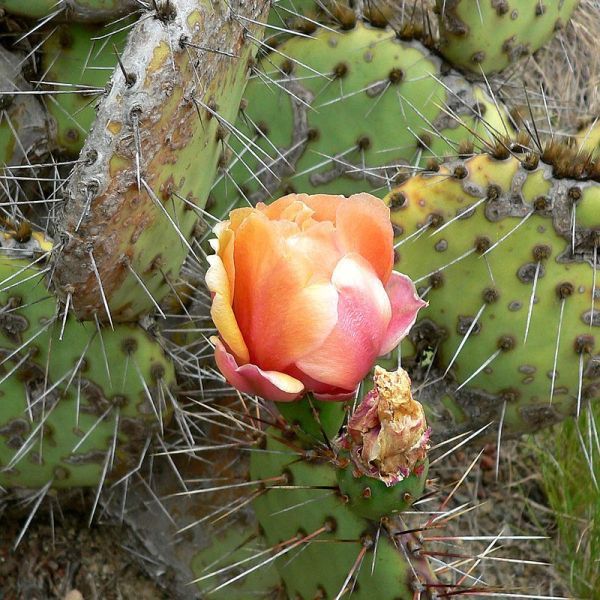Opuntia Phaeacantha Seeds (Tulip Prickly Pear Seeds)
Opuntia Phaeacantha Seeds (Tulip Prickly Pear Seeds)
Hardy, drought-tolerant cactus with showy yellow flowers and edible fruits—perfect for xeriscaping.

Delivery
All orders shipped with UPS Express.
Always free shipping for orders over US $250.
All orders are shipped with a UPS tracking number.
Returns
Items returned within 14 days of their original shipment date in same as new condition will be eligible for a full refund or store credit.
Refunds will be charged back to the original form of payment used for purchase.
Customer is responsible for shipping charges when making returns and shipping/handling fees of original purchase is non-refundable.
All sale items are final purchases.
Help
Give us a shout if you have any other questions and/or concerns.
Email: contact@domain.com
Phone: +1 (23) 456 789
Availability: In stock
SKU
Opuntia Phaeacantha
Opuntia phaeacantha, commonly known as tulip prickly pear, desert prickly pear, brown-spined prickly pear, or Mojave prickly pear, is an evergreen perennial growing to 0.5 m (1ft 8in). It has adapted to a variety of habitats and is one of the most widely distributed prickly pear in the southwestern USA, lower Great Plains, and northern Mexico.
Tulip prickly pear is a low-growing, spreading cactus with long flat green pads bearing wool and spines.
The spines are brown, reddish-brown, or gray, and often over 3 cm in length.
Flowers are variable in color; they may be bright yellow usually with a red center, peach, pink or reddish up to 3 inches wide, opening in April and May. The edible fruits are red or purple with green flesh.
The fruit can be eaten raw, cooked or dried. Fruits can be made into a jelly or baked with sugar or cinnamon. The seed s can be dried, parched and ground into a meal, then added to flour and used in making cakes.
This species has a very wide range, and up to ten or more varieties have been described, making exact identification confusing.
Hardiness zone : 8-11
| Label | Opuntia phaeacantha |
|---|---|
| Common name | Tulip Prickly Pear |
| Family | Cactaceae |
| Genus | Opuntia |
| Species | Opuntia phaeacantha |
| Germination | Sow early spring in a well-drained compost in a greenhouse (20§-30§C). When they are large enough to handle, prick the seedlings out into individual pots and grow them on in the greenhouse for at least their first two winters. Plant them out into their permanent positions in late spring or early summer, after the last expected frosts. Give the plants some protection from winter wet. Make sure you have some reserve plants in case those outdoors do not overwinter. Seeds may be extremely slow to germinate. Be patient. |
| Price View | Price Range |

